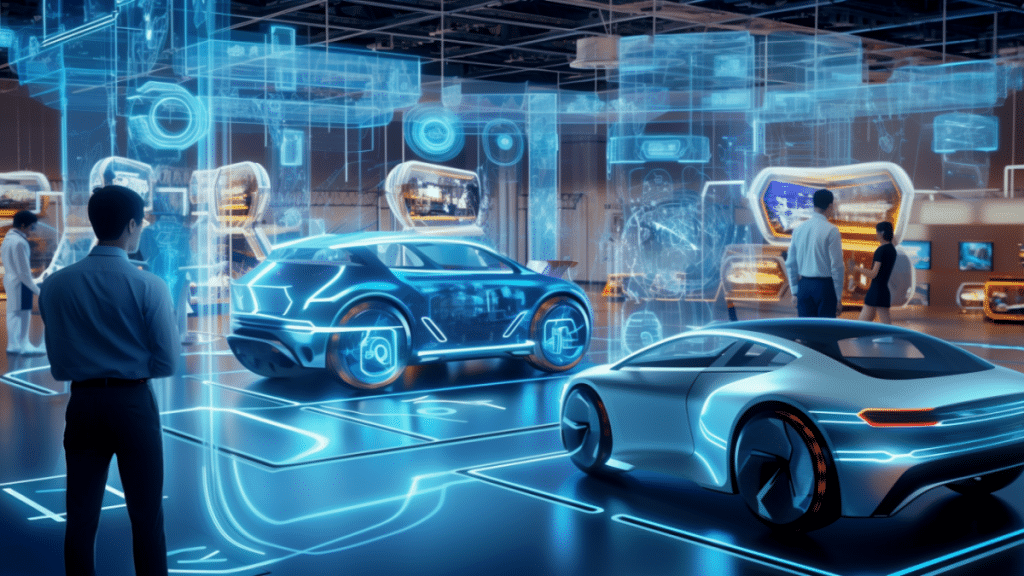Building an AI technician is an ambitious and innovative endeavor that combines artificial intelligence (AI) with practical applications to create a digital expert capable of diagnosing, troubleshooting, and resolving technical issues. AI technicians have the potential to revolutionize industries such as IT, automotive repair, manufacturing, and healthcare by providing scalable and efficient solutions to technical challenges. Here’s a comprehensive guide on how to conceptualize, design, and build an AI technician.
Understanding the Role of an AI Technician
An AI technician is a software-based system designed to perform tasks typically associated with human technicians. These tasks include diagnosing problems, offering step-by-step repair instructions, and executing automated repairs or configurations. Depending on the industry, the scope of an AI technician may range from resolving IT network issues to performing predictive maintenance on industrial equipment.
With that said, the Sonatus AI Technician Builder, is a no-code platform that empowers OEMs to create vehicle-specific AI Technicians to assist owners, technicians, and engineers in swiftly diagnosing and resolving issues–so humans are very much involved! The Builder allows OEMs to very easily create vehicle, model and trim specific AI Technician applications suited for multiple personas and user scenarios.
Key Components of an AI Technician
To build an effective AI technician, you must integrate several core components:
1. Knowledge Base:
- A robust repository of technical information, such as troubleshooting guides, repair manuals, and industry standards.
- Dynamic updating capabilities to incorporate the latest advancements and solutions.
2. Natural Language Processing (NLP):
- Enables the AI technician to understand and respond to user queries in natural language.
- Facilitates interaction through voice or text interfaces.
3. Machine Learning (ML):
- ML models are essential for recognizing patterns, predicting issues, and improving over time based on historical data.
- Includes supervised learning for structured problem-solving and unsupervised learning for anomaly detection.
4. Computer Vision (if applicable):
- Used in scenarios where the AI technician must analyze images or video feeds, such as diagnosing mechanical faults or inspecting damaged components.
5. Automation and Integration Tools:
- APIs and software connectors for integrating with hardware, software, or IoT devices to execute repairs or adjustments automatically.
6. User Interface (UI):
- A user-friendly interface for technicians and end-users to interact with the AI system. This may include dashboards, chatbots, or augmented reality (AR) overlays.
7. Security Protocols:
- Ensures the system is protected from unauthorized access and data breaches, especially when dealing with sensitive information.
Steps to Build an AI Technician
1. Define the Scope and Purpose
- Identify the specific industry and problem areas the AI technician will address. For instance, is the system aimed at IT troubleshooting, automotive diagnostics, or medical equipment repair?
- Determine the level of autonomy required: Should the AI technician only assist human operators, or should it perform tasks independently?
2. Gather and Structure Data
- Collect a comprehensive dataset relevant to the chosen domain, such as:
- Historical troubleshooting logs.
- Equipment manuals and technical schematics.
- Real-world case studies and resolutions.
- Structure the data in a format that facilitates easy retrieval and machine learning training.
3. Develop Core Algorithms
- Create algorithms for diagnosing issues based on input data. These algorithms may include:
- Decision trees for guided problem-solving.
- Neural networks for pattern recognition.
- Clustering techniques for anomaly detection.
4. Build the Knowledge Base
- Use natural language processing to parse technical documents and populate the knowledge base.
- Implement ontology-based structures to organize information logically and semantically.
5. Design the Interaction Layer
- Develop intuitive interfaces that allow users to communicate with the AI technician seamlessly.
- Integrate NLP for interpreting user queries and generating context-aware responses.
- Include visual aids such as diagnostic charts, repair videos, or AR simulations to enhance user experience.
6. Integrate IoT and Automation
- For hardware-related tasks, incorporate IoT devices to enable real-time monitoring and diagnostics.
- Use automation frameworks to execute repairs or adjustments autonomously. For example:
- In IT, an AI technician could restart servers or update software.
- In manufacturing, it might calibrate machinery or replace faulty components using robotic arms.
7. Test and Validate
- Conduct rigorous testing in controlled environments to ensure the system performs as intended.
- Use real-world scenarios to validate the AI technician’s ability to diagnose issues accurately and recommend effective solutions.
- Continuously refine the system based on feedback and observed performance.
Challenges and Considerations
1. Data Quality and Availability:
- Access to high-quality, domain-specific data is critical for training the AI technician. Missing or inaccurate data can lead to suboptimal performance.
2. Complexity of Integration:
- Integrating the AI technician with existing systems, hardware, and IoT devices can be complex and requires robust API design.
3. User Trust and Adoption:
- Users may be hesitant to rely on an AI technician, particularly for critical tasks. Building trust requires demonstrating reliability, transparency, and consistent performance.
4. Ethical and Security Concerns:
- The AI technician must comply with ethical guidelines and protect sensitive data to avoid misuse or breaches.
Future Trends in AI Technicians
1. Augmented Reality (AR) Integration:
- AI technicians could use AR to guide users through repair processes with visual overlays and real-time feedback.
2. Self-Learning Capabilities:
- Future AI technicians may include self-learning mechanisms, allowing them to adapt to new challenges without manual updates.
3. Edge Computing:
- Running AI models on edge devices will reduce latency and enhance real-time decision-making, especially in remote or resource-constrained environments.
4. Expanded Use Cases:
- From medical diagnostics to space exploration, AI technicians will increasingly be deployed in high-stakes and specialized domains.
Building an AI technician is a multidisciplinary endeavor that requires expertise in AI, domain knowledge, and system integration. By combining robust data, advanced algorithms, and user-friendly interfaces, developers can create systems that revolutionize how technical problems are addressed. As technology continues to evolve, AI technicians are poised to become invaluable tools in a wide range of industries, offering efficiency, precision, and scalability.
